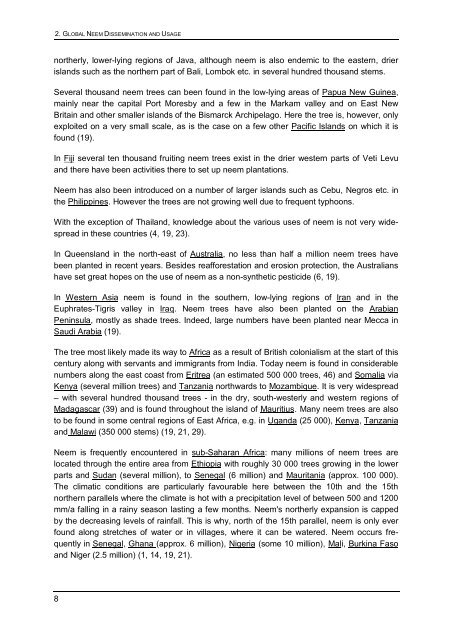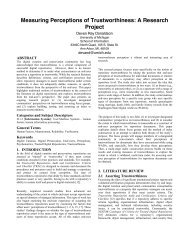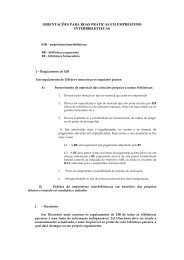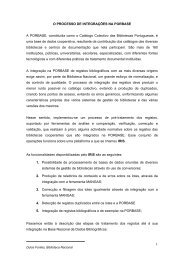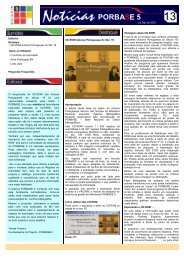Status report on global Neem usage - Biblioteca Nacional de Portugal
Status report on global Neem usage - Biblioteca Nacional de Portugal
Status report on global Neem usage - Biblioteca Nacional de Portugal
Create successful ePaper yourself
Turn your PDF publications into a flip-book with our unique Google optimized e-Paper software.
2. GLOBAL NEEM DISSEMINATION AND USAGE<br />
northerly, lower-lying regi<strong>on</strong>s of Java, although neem is also en<strong>de</strong>mic to the eastern, drier<br />
islands such as the northern part of Bali, Lombok etc. in several hundred thousand stems.<br />
Several thousand neem trees can been found in the low-lying areas of Papua New Guinea,<br />
mainly near the capital Port Moresby and a few in the Markam valley and <strong>on</strong> East New<br />
Britain and other smaller islands of the Bismarck Archipelago. Here the tree is, however, <strong>on</strong>ly<br />
exploited <strong>on</strong> a very small scale, as is the case <strong>on</strong> a few other Pacific Islands <strong>on</strong> which it is<br />
found (19).<br />
In Fiji several ten thousand fruiting neem trees exist in the drier western parts of Veti Levu<br />
and there have been activities there to set up neem plantati<strong>on</strong>s.<br />
<strong>Neem</strong> has also been introduced <strong>on</strong> a number of larger islands such as Cebu, Negros etc. in<br />
the Philippines. However the trees are not growing well due to frequent typho<strong>on</strong>s.<br />
With the excepti<strong>on</strong> of Thailand, knowledge about the various uses of neem is not very wi<strong>de</strong>spread<br />
in these countries (4, 19, 23).<br />
In Queensland in the north-east of Australia, no less than half a milli<strong>on</strong> neem trees have<br />
been planted in recent years. Besi<strong>de</strong>s reafforestati<strong>on</strong> and erosi<strong>on</strong> protecti<strong>on</strong>, the Australians<br />
have set great hopes <strong>on</strong> the use of neem as a n<strong>on</strong>-synthetic pestici<strong>de</strong> (6, 19).<br />
In Western Asia neem is found in the southern, low-lying regi<strong>on</strong>s of Iran and in the<br />
Euphrates-Tigris valley in Iraq. <strong>Neem</strong> trees have also been planted <strong>on</strong> the Arabian<br />
Peninsula, mostly as sha<strong>de</strong> trees. In<strong>de</strong>ed, large numbers have been planted near Mecca in<br />
Saudi Arabia (19).<br />
The tree most likely ma<strong>de</strong> its way to Africa as a result of British col<strong>on</strong>ialism at the start of this<br />
century al<strong>on</strong>g with servants and immigrants from India. Today neem is found in c<strong>on</strong>si<strong>de</strong>rable<br />
numbers al<strong>on</strong>g the east coast from Eritrea (an estimated 500 000 trees, 46) and Somalia via<br />
Kenya (several milli<strong>on</strong> trees) and Tanzania northwards to Mozambique. It is very wi<strong>de</strong>spread<br />
– with several hundred thousand trees - in the dry, south-westerly and western regi<strong>on</strong>s of<br />
Madagascar (39) and is found throughout the island of Mauritius. Many neem trees are also<br />
to be found in some central regi<strong>on</strong>s of East Africa, e.g. in Uganda (25 000), Kenya, Tanzania<br />
and Malawi (350 000 stems) (19, 21, 29).<br />
<strong>Neem</strong> is frequently encountered in sub-Saharan Africa: many milli<strong>on</strong>s of neem trees are<br />
located through the entire area from Ethiopia with roughly 30 000 trees growing in the lower<br />
parts and Sudan (several milli<strong>on</strong>), to Senegal (6 milli<strong>on</strong>) and Mauritania (approx. 100 000).<br />
The climatic c<strong>on</strong>diti<strong>on</strong>s are particularly favourable here between the 10th and the 15th<br />
northern parallels where the climate is hot with a precipitati<strong>on</strong> level of between 500 and 1200<br />
mm/a falling in a rainy seas<strong>on</strong> lasting a few m<strong>on</strong>ths. <strong>Neem</strong>'s northerly expansi<strong>on</strong> is capped<br />
by the <strong>de</strong>creasing levels of rainfall. This is why, north of the 15th parallel, neem is <strong>on</strong>ly ever<br />
found al<strong>on</strong>g stretches of water or in villages, where it can be watered. <strong>Neem</strong> occurs frequently<br />
in Senegal, Ghana (approx. 6 milli<strong>on</strong>), Nigeria (some 10 milli<strong>on</strong>), Mali, Burkina Faso<br />
and Niger (2.5 milli<strong>on</strong>) (1, 14, 19, 21).<br />
8


